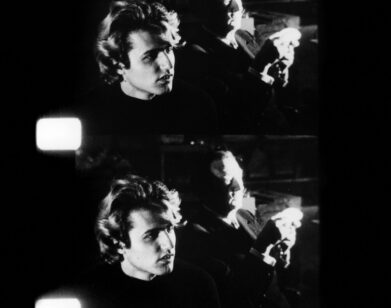Jeremy Shaw
Ever since the Wall fell in 1989, Berlin has been the city that artists have defected to—in part for the cheap living and studio space, in part to get away from the hungry market and social swirl, and in part for all of the dirty, glamorous decadence that has made the fraught German capitol a place of myth and mayhem for generations of young misfits. Artists don’t come to Berlin to make it big—they come to be artists, and today, a new crop of international creators have arrived to make the city their own.
For a show at New York’s PS1, 34-year-old Canadian Jeremy Shaw turned a white-walled room into an immersive video experience that felt to some like being at a rave on drugs. In fact, the three-channel work Best Minds Part One (Expanded) uses footage taken at a straight-edge hardcore concert, slowed down and played out of synch to a soundtrack of deteriorating tape reels—in other words, these teens are tripping out on the music, not MDMA. Shaw’s fluid multimedia productions often focus on teen subcultures, drug use, methods of achieving ecstasy, and the scientific efforts to chart those magical brainwaves. Among the vast projects he is currently working on is a series of Kirlian Polaroids that read the magnetic fields—or presumably the emotional auras—of Shaw’s own finger while listening to music or of certain psychedelic plants. He’s also finishing up a black-and-white film he shot in the Bronx depicting transgender voguer Leiomy Mizrahi, which will premiere in the spring. But perhaps most poignantly, in reference to Berlin, last summer Shaw plastered the city with 8,000 posters—in different foreign languages—advertising the notoriously cultish 1981 Berlin drug film Christiane F. In a sense, he brilliantly undermined youth culture’s need to romanticize its own destruction—as well as the harder, mythical sides of Berlin. But for Shaw, who has lived there for four years and keeps a studio in Kreuzberg, the city has not had too many dark patches. “I feel like I get more living done, if that makes sense,” he says. “I get more out of my days and nights, without feeling the chronic big-city anxiety of always having to be working. So I think I get as much, if not more work done.”
See more artist’s working in Berlin. Click Here







